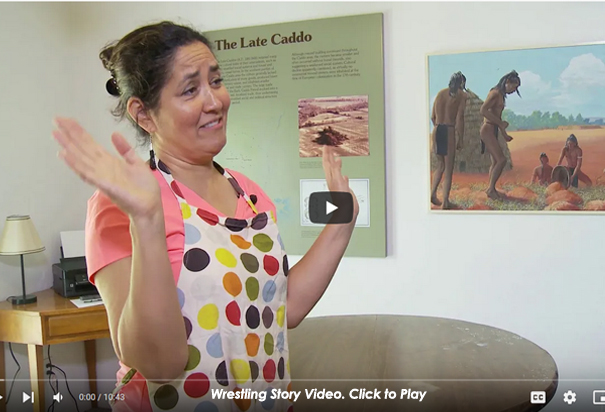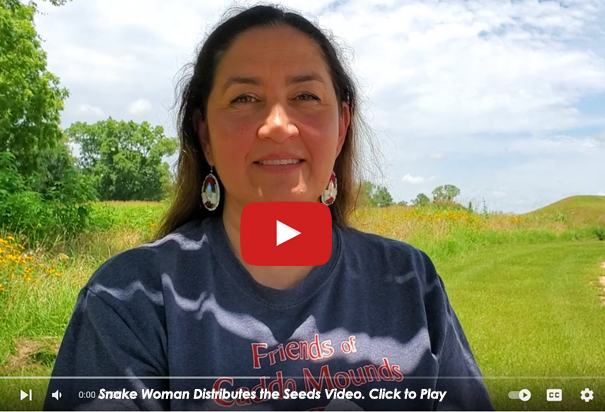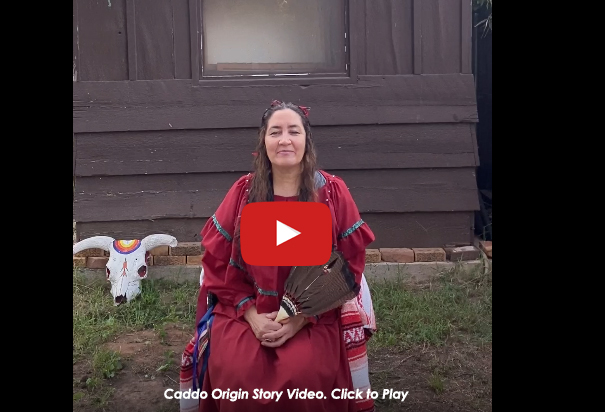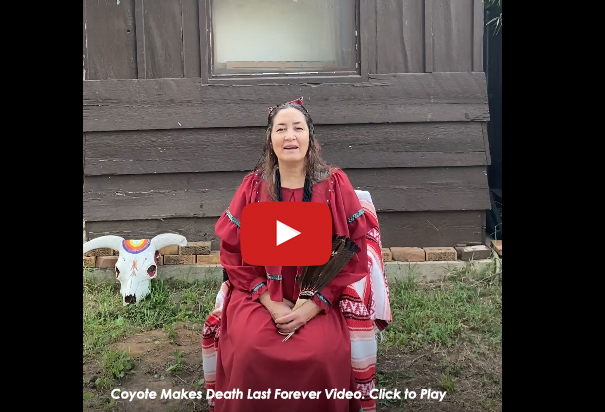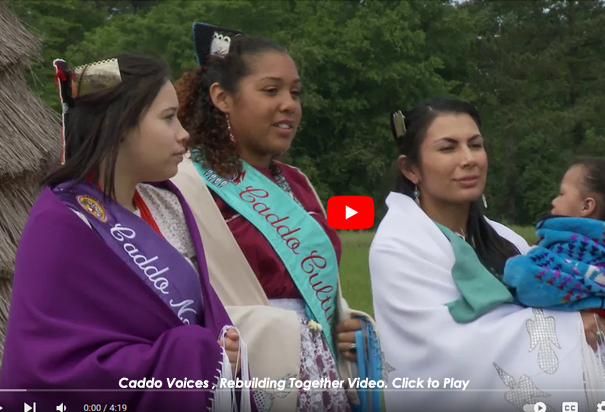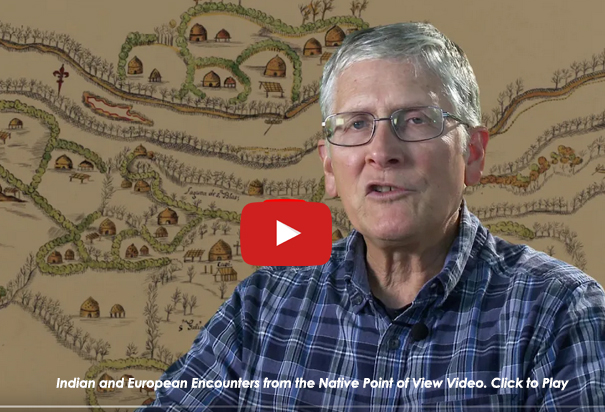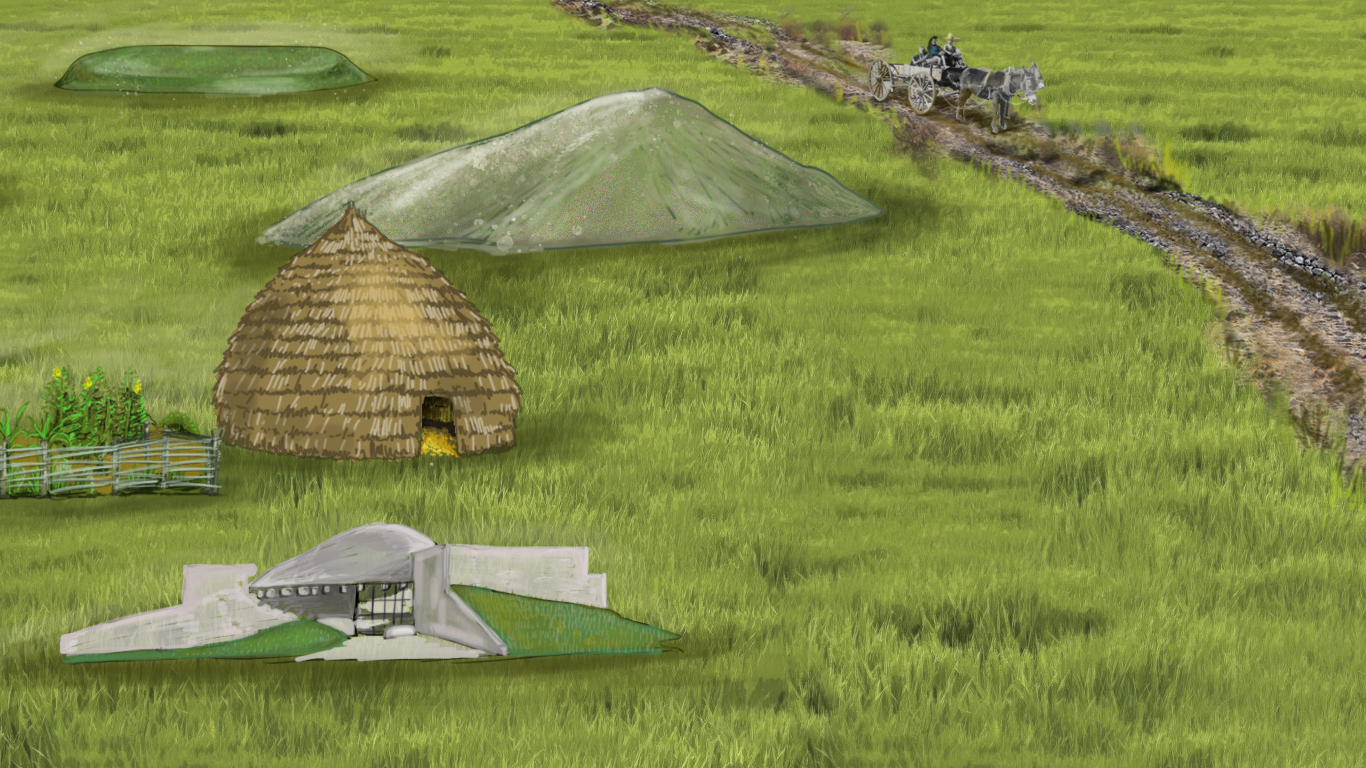
Low Platform Mound
Does the word plaza evoke thoughts of festivals, shared meals, spiritual or other community gatherings? It is likely that the Low Platform Mound (a flat-topped mound) stood at a plaza that hosted these types of activities and others such as trade, diplomatic meetings, and sports like wrestling or stickball. Today, when we gather with the Caddo community at Caddo Mounds, we do so in the open space around the Grass House and in view of the Mounds, the ancient reminders of the thriving community who lived here for more than 20 generations.
Keekah Nattee Toots-ah Naht-ooh, Snake Woman’s Garden
For many in East Texas, gathering wild food and medicine, gardening, and other activities of self-sufficiency are everyday practices with knowledge and skills passed down through generations by parents and grandparents. In fact, over 80 generations of people, beginning about 2,500 years ago, have gardened on this fertile East Texas land. At Caddo Mounds SHS we learn and teach about the land conservation, gardening, and foraging practices of historic Caddo people through the knowledge of scientists, historians, anthropologists, and the Caddo community.
For many, the thought of snakes brings a shudder, but for the Caddo, Snake Woman was responsible for bringing seeds to the people of the world and teaching them how to tend to them. Snake-Woman Distributes Seeds teaches lessons of respect for growing things.
Koo Hoot Kiwat, the Grass House
How would you describe “home”? The word home holds more than a place, a dwelling. Home is the space that holds all lived experiences, community, doing, and making. Place-making is the act of defining what it means to be home. More than 1,000 years ago, Caddo Ancestors emerged and cultivated home in areas of what are today Texas, Louisianna, Arkansas, and Oklahoma.
Cultural Universals, Home, https://hraf.yale.edu/home-truths-an-anthropology-of-house-and-home
Burial Mound
While the Burial Mound at Caddo Mounds SHS holds the remains of centuries of spiritual, social and political Caddo leaders, the land itself holds the bones and stories of more than 1,000 years of Caddo ancestors.
Moccasin My Feet (caddoan burial rites), by Caddo Elder Dr. Guyneth Bedoka Cardwell
Kee Whut Sundah people: a caddo journey, the Kadohadacho Historical Society, 1999.
moccasin my feet
clothe me ribbon and cloth
my journey home has come
sing to me of peace
and bid me farewell
talk to me
as you usher me homeward
as you wash your grief away
the gentle rain removes
my traces from the earth
stand not to the east
bar not my journey home
my riverward path
the river i must cross
is dark and rough
prepare my moccasin feet
so that I might cross swiftly
light the way for me
with torch of fire
for six days and nights
light my journey home
Museum
With a roof inspired by the strength and unity of the grass house’s central hoop and pole frame, an earthen berm to protect the museum from violent weather and help it blend with the Caddo mounds, a water catchment system to nurture Keekah Nattee Toots-ah Naht-ooh Snake Woman’s Garden, and exhibits that showcase the work of Caddo artists, the new museum at Caddo Mounds SHS embraces the spirit of the place and the input of the Caddo community to give visitors a compelling doorway into the Caddo story.
El Camino Real de los Tejas
“The camino real, or more aptly the caminos reales, is more than a route, more than a series of parajes between two end points. It is a complex set of relationships between travelers and nature, buyers and sellers, governors and governed.”
–Jesus F. de la Teja, 1991
For thousands of years, this slice of East Texas has been a permanent residence and perpetual campground to the Tejas/Caddo, Spanish, French, Anglo, African American, and a variety of other people. During the time of European contact, Spanish travelers to the land of the Tejas journeyed along El Camino Real de los Tejas (the Royal Road—the oldest road in Texas) and faced a muddy and difficult crossing at the Neches River. The dry mound prairie, a welcome sight to weary travelers, served as a paraje, or perpetual campground. The Spanish named this place Paraje el Cerrito, the campground at the little mound or hill, and it offered a high, dry land with grass for grazing animals, edible plants for foraging, and the nearby Neches River and natural springs.
“El Camino Real de los Tejas served as a political, economic, and cultural link between Mexico City and Los Adaes (and all points in between). Settlers, missionaries, soldiers, servants, and indigenous allies followed various roads and trails along the 2,500 miles of this route to populate the settlements, missions, and presidios of eastern Texas and northwestern Louisiana. Linking a variety of cultural and linguistic groups, the royal road served as an agent for cultural diffusion, biological exchange, and communication and as a conduit for exploration, trade, migration, settlement, and livestock drives. Spanish, Mexican, French, American, Black, and American Indian travelers along El Camino Real de los Tejas created a mix of traditions, laws, and cultures that is reflected in the people, landscapes, place names, languages, music, and arts of Texas and Louisiana today.”
~National Parks Service, El Camino Real Del Los Tejas at,https://www.nps.gov/elte/learn/historyculture/index.htm
Did you know that Texas comes from the Spanish transliteration of the Caddo word for friend or ally, taysha. Spanish spelled the word Taysha, Tejas, which became, Texas.
